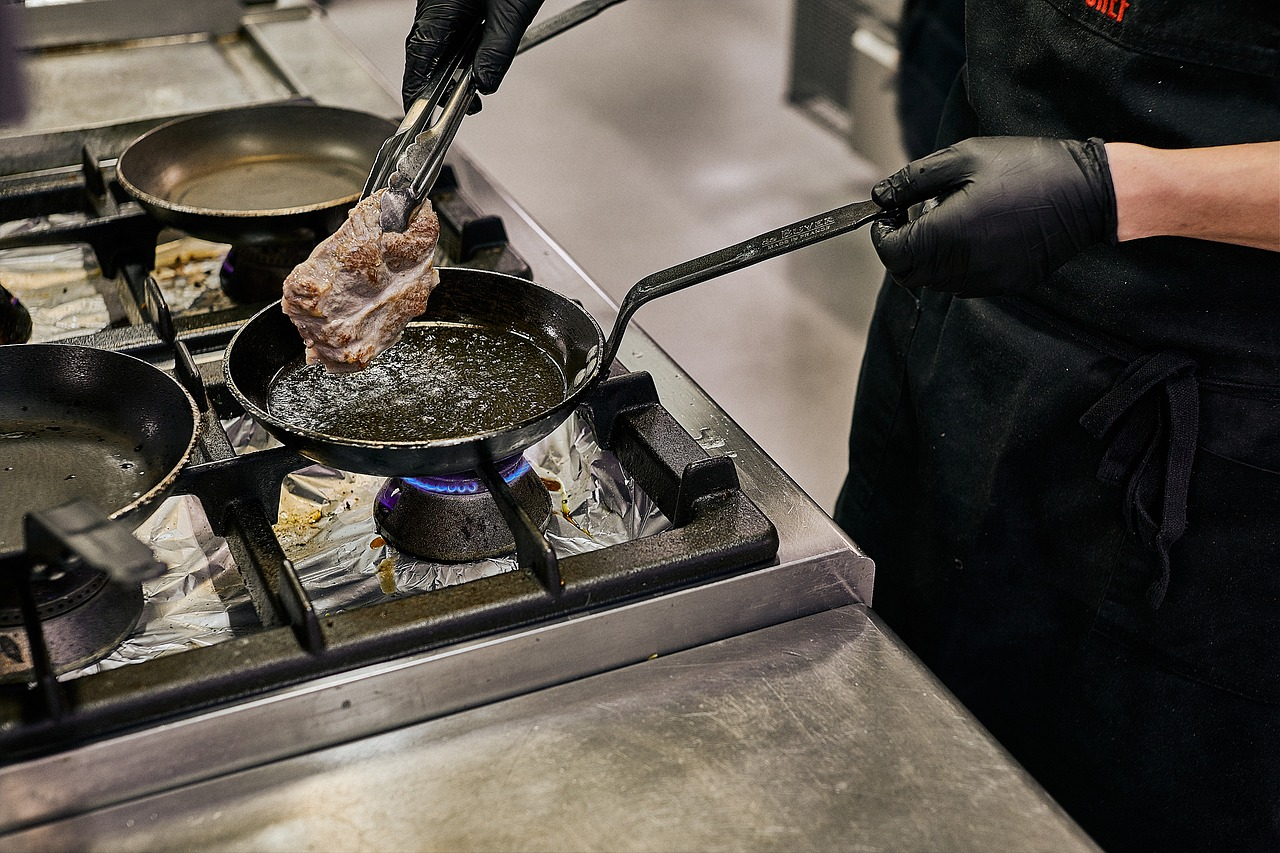
Frying has long been a staple cooking method in homes and professional kitchens, delivering crispy, golden textures and rich flavors. However, excessive oil usage can be costly and impact health and food quality.
Fortunately, with the right techniques, you can fry with less oil without compromising on crunch or taste.
Let’s explore expert-approved strategies to maximize crispiness while minimizing oil use and absorption.
Choose the Right Oil and Temperature
The type of oil and its temperature play a critical role in frying. Oils with a high smoke point, such as peanut, canola, or sunflower oil, are ideal because they remain stable at high heat, reducing oil breakdown and absorption.
Maintaining the correct temperature is just as important. If the oil is too cold, food absorbs more grease, resulting in a soggy texture. Too hot, and it burns the exterior before cooking the inside properly. The optimal frying temperature is between 325°F and 375°F.
Using a kitchen thermometer helps maintain precision, ensuring the perfect balance of crispiness and minimal oil absorption.
Pre-Treat and Dry Your Ingredients
Moisture is the enemy of crisp frying, as emphasized by the seasonal frying tips with FryLow, a solution that enhances frying efficiency and consistency.
Excess water on ingredients causes oil to splatter and increases absorption, making the final product greasier. Before frying, thoroughly pat dry all ingredients with a paper towel or let them air-dry for a few minutes.
For proteins like chicken or fish, allowing them to rest in the refrigerator uncovered for an hour before frying helps remove excess moisture.
Vegetables benefit from light salting to draw out water, followed by a quick pat-down before hitting the oil. These steps ensure an even, crisp coating with less oil retention.
Use a High-Quality Coating
A well-balanced batter or breading creates the perfect crunch while forming a protective barrier that reduces oil absorption.
Cornstarch and rice flour are excellent alternatives to traditional wheat flour, as they crisp up faster and absorb less grease.
For breaded items, double-coating with flour, egg wash, and breadcrumbs helps achieve an extra crispy texture while preventing excessive oil penetration. Letting the coated food rest for a few minutes before frying allows the coating to adhere better, reducing the chances of it falling apart in the oil.
Fry in Batches for Even Cooking
Overcrowding the pan or fryer lowers the oil temperature, leading to uneven cooking and increased oil absorption. Frying in small batches ensures that each piece cooks evenly, maintaining a consistent texture and flavor.
Giving food enough space also allows moisture to escape, preventing steam from softening the crispy exterior. This method is particularly crucial for fries, tempura, and breaded proteins, where maintaining a light, airy texture is essential. By controlling portion sizes and avoiding overcrowding, you can improve food quality and save fry oil in the process.
Invest in Quality Frying Equipment
Using the right cookware makes a noticeable difference in oil efficiency and frying performance. A heavy-bottomed pot or deep fryer retains heat better, ensuring the oil temperature remains stable.
For home frying, a cast-iron skillet or stainless-steel pan works well. In commercial kitchens, investing in advanced oil filtration systems or fry enhancers like FryLow can significantly improve frying efficiency while reducing oil absorption, keeping food crisp and flavorful.
Drain Properly After Frying
Proper draining is the final step to ensuring crispy fried food with minimal grease.
Placing fried items on a wire rack allows excess oil to drip away without trapping steam, which can make the coating soggy.
While paper towels are commonly used, they can sometimes cause food to sit in pooled oil, leading to reabsorption. A cooling rack set over a baking sheet provides better airflow, preserving the crisp texture for longer.
Conclusion
Frying with less oil doesn’t mean sacrificing crunch or flavor. It’s about using smart techniques to maximize efficiency and texture.
Selecting the right oil, maintaining proper temperature, preparing ingredients correctly, and optimizing frying methods can help you achieve perfectly crispy results with minimal grease. Applying these expert strategies will elevate your frying game while keeping costs and oil usage under control.




